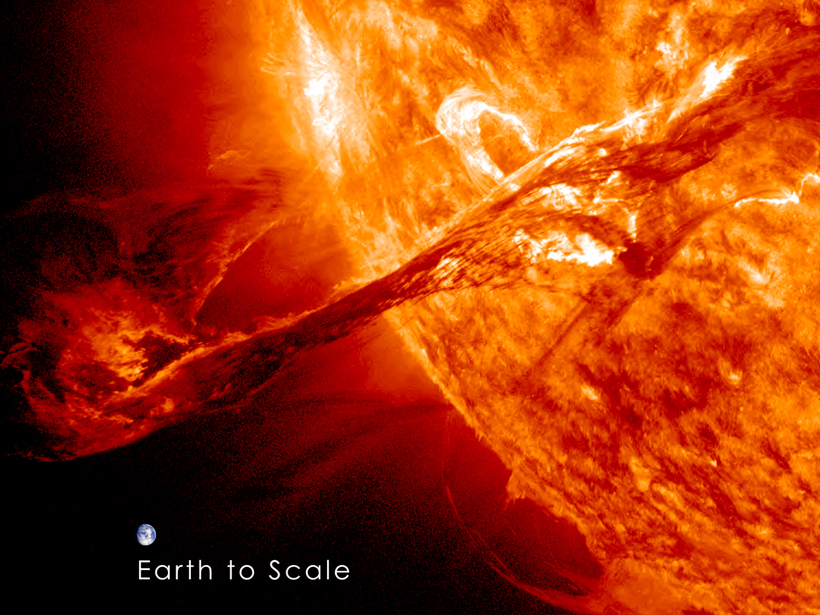Source: Journal of Geophysical Research: Space Physics
Severe space weather can harm satellites, spacecraft, and telecommunications systems on Earth’s surface. Predicting serious events requires a solid understanding of the solar wind, a 1,609,344 kilometer/hour stream of charged particles constantly emitted by the Sun in all directions. However, solar wind dynamics are complex and pose many challenges for the scientists who study them.
A new approach by Feng et al. builds and improves on previous efforts to model the solar wind. Driven by real-world data, the new model predicts the behavior of the solar wind from the moment it leaves the Sun until its arrival at Earth.
The scientists based the new model on an older magnetohydrodynamics simulation that predicts the behavior of an electrically conducting fluid (the solar wind, in this case) in the presence of a magnetic field. The older model relies on daily maps of the magnetic field of the Sun’s light-emitting layer, known as the photosphere.
To improve the older simulation, the scientists changed the way the daily magnetic field data are processed and used by the model. They also added a limit on the mass flux of the photosphere—the energy it emits over a given surface area.
The team tested the new model’s predictions against solar wind observations from 1 July to 11 August 2008. The model accurately predicted features in the corona (the outer atmosphere of the Sun), including dark coronal holes and their corresponding streamer belts—the bright rays visible during a solar eclipse. The model also accurately predicted interplanetary solar wind behavior.
The new model was less accurate at predicting the total magnetic field strength during the observation period. It also failed to capture smaller coronal holes. Although improvements are needed, the model could help make better predictions of space weather, including extreme events like coronal mass ejections. (Journal of Geophysical Research: Space Physics, doi:10.1002/2015JA021911, 2015)
—Sarah Stanley, Freelance Writer
Citation: Stanley, S. (2016), New solar wind model could improve space weather forecasts, Eos, 97, doi:10.1029/2016EO046693. Published on 26 February 2016.
Text © 2016. The authors. CC BY-NC 3.0
Except where otherwise noted, images are subject to copyright. Any reuse without express permission from the copyright owner is prohibited.

